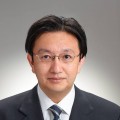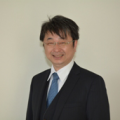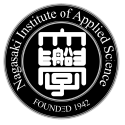PEOPLE
Division of Electrical, Electronics, and Information Technology
-

- Executive Director for Division of Electrical, Electronics, and Information Technology
- Professor
- Dr. MATSUIMATSUI, NobumasaNobumasa
- Affiliation
- EEI div, Graduate School and School of NIASGraduate School and School of NIAS
- Field of Research
- Electrical Energy Engineering Control and SystemEngineering Energy Optimization and Management on SmartGrid and Power PlantElectrical Energy Engineering Control and SystemEngineering Energy Optimization and Management on SmartGrid and Power Plant
- Research
- As the deregulation of the electric power industry moves forward, the stabilization of a grid balance using optimum collection of energy source is important in electric power systems. The research focuses on the optimization and management of diversified energy sources on the smart grid and power plant.As the deregulation of the electric power industry moves forward, the stabilization of a grid balance using optimum collection of energy source is important in electric power systems. The research focuses on the optimization and management of diversified energy sources on the smart grid and power plant.
-

- Associate Director for Division of Electrical, Electronics, and Information Technology
- Associate Professor
- Dr. SATO, Masanori
- Affiliation
- EEI div, Graduate School and School of NIAS
- Field of Research
- Robotics
- Research
- The purpose of this research is development of robots which is used in various fields and applied for human society. For example, exploration of ocean resources are expected, while operations on underwater are dangerous for human. Therefore, AUVs (Autonomous Underwater Vehicles) are needed on behalf of human worker. To apply robots for such projects, robust hardware, sensing system and adaptive control system are needed. Additionally, in order to apply robots in crowded area,not only navigation system but safety of human should be considered.
-

- Professor
- Dr. President KUROKAWA, Fujio
- Affiliation
- ai cen, EEI div, Graduate School of Engineering
- Field of Research
- Electronic Circuit, Power Electronics
- Research
- Development of Fast Digital Control Algorithm and Circuit (Digital control method for high frequency switching power supply is applied to VRM, LED drive, EV battery system and so forth.), Development of Power Processing Unit for Next Generation Satellite (A new control method is studied to control the Hall thruster engine of the next generation satellite in space.)
-

- Professor
- Dr. 大石, 潔
- Affiliation
- EEI div, 電気電子情報部門 : 長岡技術科学大学 名誉教授 (同大学大学院工学研究科産学官連携研究員)
- Field of Research
- パワーエレクトロニクス、モーションコントロール、ロボティクス、メカトロニクスに関する分野
- Research
-
具体的な研究内容は、安価で小型軽量の海外向けエアコンのためのIPMSM(埋込磁石同期機)の高力率制御、IPMモータの位置センサレス制御とトルクリプル抑制制御、単相インバータ電源の並列運転時の均等パワー供給制御、産業用ロボットの力制御、高速モーション制御・振動抑制制御、人間の動作を模倣するロボットの開発、通勤電車の空転再粘着(アンチスリップ)制御、光ディスクの高速トラッキング制御などに関する研究である。
-

- Professor
- Dr. KAWAZOE, Kaoru
- Affiliation
- EEI div, Graduate School and School of NiAS
- Field of Research
- Medical Engineering Clinical Engineering
- Research
-
Medical engineering has undergone rapid development in recent years through the introduction of engineering theory and technology to medical science and their application in broad areas of mediccal treatment.
In the process of developing medical devices, consideration is given to quantification,
objectivity,, reproducibility, planning, and forecasting.
We create new medical equipment from the standpoint of both medicine and engineering and pursue research and education including basic content necessary for development.
-

- Professor
- Dr. TANAKA, Kenichi
- Affiliation
- EEI div, Graduate School and School of NIAS
- Field of Research
- Image science and technology, Communication engineering, Physical measure, Optics
- Research
-
We have been studying display devices such as liquid crystal displays, holographic displays, printers and so on.
Currently, three-dimensional image display by electron holography, image quality of the printer, such as anti-counterfeiting technology for are conducting research.
In the future, we will study the application of multimedia technology to education and internet to things technology.
-

- IIST DirectorDivision of Electrical, Electronics, and Information Technology
- Professor
- Dr. TANAKA, Yoshito
- Affiliation
- ai cen, FS div, EEI div, Graduate School and School of NIAS
- Field of Research
- IoT and Embedded System, Integrated-Circuit System, Front-End Electronics System for High Energy Physics
- Research
- High-speed Front-End Electronics system using source synchronous technology was developed and installed in 2000 at Brookhaven National Laboratory for PHENIX RICH detector. Currently the upgrade system for ALICE detector at CERN LHC is studying with Prof. Oyama and Prof. Hamagaki at NiAS. As a local research contribution for companies and society, smart-city and smart wellness city applied by ICT and IoT, Embedded and Integrated-Circuit, and/or using Big Data are going on current project.
-

- Professor
- Dr. KIYOYAMA, Koji
- Affiliation
- EEI div, Graduate School and School of NiAS
- Field of Research
- Electronics
- Research
-
The demand for biomedical implants, such as vital-signal sensors and neuromuscular stimulators that depend on the development of small and low-power circuits, is on the rise.
We conduct research on the development of advanced implantable medical devices.
Our main fields of interest are the design of mixed-signal LSI and systems, the analog and digital signal processing, and measurement techniques.
-

- Professor
- Dr. HINATA, Haruo
- Affiliation
- EEI div, Graduate School and School of NiAS
- Field of Research
- Control Theory of Infinite Dimensional Systems
- Research
- The systems described in partial differential equations are called infinite dimensional systems. We used to apply theory of functional analysis to the research of control problems for infinite dimensional systems. In this laboratory, we will study not only control theory, but also the verification of our theory using simulation software.
-

- Professor
- Dr. LIU, Zhen
- Affiliation
- EEI div, Graduate School and School of NiAS
- Field of Research
- Intelligent computing data mining Decision Support System
- Research
-
With the development of information communication and the Internet, huge amounts of data including unstructured data are generated explosively. Research on data mining methodology and its applications to discover valuable knowledge and rules from the inside of big data are carried out in the laboratory. In order to improve processing efficiency, parallel mining algorithms and visualization technology and access methodologies of multidimensional data based on PC cluster as high performance computing environment are also carried out.
Moreover, issues related to the multi-attribute decision-making methodologies and decision support system and its applications are also topics of interest.
-

- Professor
- Dr. SHIMOJIMA, Makoto
- Affiliation
- FS div, EEI div, Graduate School and School of NiAS
- Field of Research
- High Energy Physics
- Research
- We conduct research on and development of data acquisition and data analysis systems for high energy physics experiments,via PC clusters of several to several tens of computers connected via high bandwidth network. Our main fields of interest are network technologies in the area of IP multicast, QoS, and distributed file systems over Fibre Channel network, and most recently research and development of embedded systems with wireless networks (such as WiFi, RFID, and ZigBee).
-

- Professor
- Dr. MOTOMURA, Masakatsu
- Affiliation
- EEI div, Graduate School and School of NiAS
- Field of Research
- Neurology Neuroimmunology
- Research
- I have set a goal to develop innovative treatments of Myasthenia gravis (MG) and fi nding a new target antigen from the neuromuscular junction. MG is caused by the failure of neuromuscular transmission mediated by pathogenic autoantibodies (Abs) against acetylcholine receptor (AChR) and muscle-specifi c receptor tyrosine kinase (MuSK). The seropositivity rates for routine AChR binding Ab and MuSK Ab in MG are 80-85% and 5-10% for MG patients in Japan, respectively. The autoimmune target in the remaining patients is unknown. In 2011,autoantibodies against low-density lipoprotein receptor-related protein 4 (Lrp4) were identifi ed in Japanese MG patients and thereafter have been reported in Germany and the USA. We developed a simple technique termed Gaussia luciferase immunoprecipitation for detecting antibodies to Lrp4. As a result, nine generalized MG patients from 300 lacking AChR Ab are positive for Lrp4 antibodies. Thymoma was not observed in any of these patients. These antibodies inhibit binding of Lrp4 to its ligand and are predominantly of the IgG1 subclass. In other reports of Lrp4 ab, Lrp4 ab positive sera inhibited agrin-induced aggregation of AChRs in cultured myotubes, suggesting a pathogenic role regarding the dysfunction of the neuromuscular endplate. These results indicate that Lrp4 is a third autoantigen in patients with MG, and anti-Lrp4 autoantibodies may be pathogenic. Further studies including neuromuscular junction biopsy are needed to clarify the pathomechanism of Lrp4 ab positive MG.







